Halle Neustadt was one of the first attempts from East Germany to plan a new city from scratch. They wanted to create a utopic place with equal conditions for everyone. To make the site more vibrant and colorful, artworks were spread all around the area, and we are here to show you these socialist murals of Halle Neustadt.
Our goal was simple when we visited Halle Neustadt in the summer of 2021 while we stayed in Leipzig. We were in town to see cute nutrias and two socialist murals: one featuring Lenin and another with Karl Marx. We were told about them by some friends, and we knew we had to go there.
But, after reading a book about Socialist Modernism in Germany, we knew that there was more to it in the Halle Neustadt.
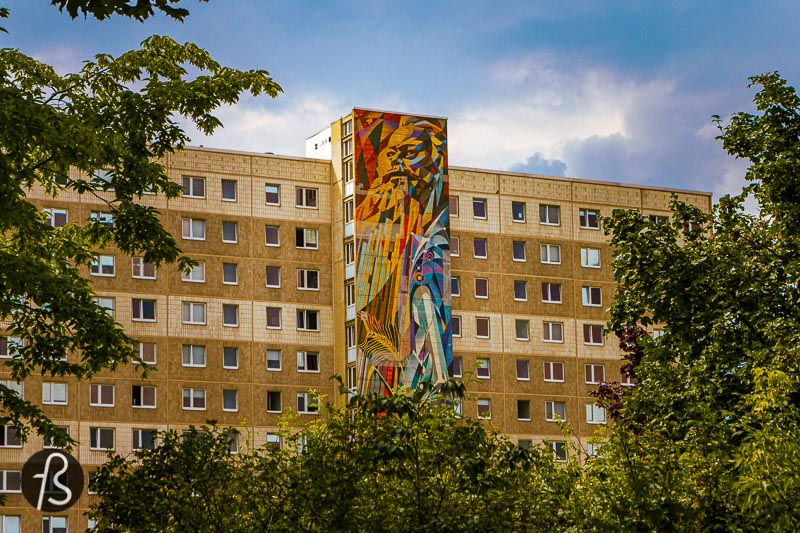
But before we talk about the socialist murals, we have to talk a bit about Halle Neustadt
Halle Neustadt was founded as a new settlement in May 1967 in East Germany. It was created as an example of urban planning with high-density living with development focused on a strip of land that extends for 4 km from east to west and is one kilometer in width. A tram line serves as the central corridor of transport, connecting people with the train station.
Most of the housing there was planned in the shape of high-rise apartments, with some towers reaching over ten floors. But most of the buildings we saw while there are around six floors.
Halle Neustadt was known as the City of the Chemistry Workers due to the factories where most people used to work. Some apartments were reserved for Soviet troops stationed in East Germany, but most were built for workers. The problem is that a lot of the infrastructure planned for the city never came to be. Because of that, the town became a bedroom community where people went to sleep between shifts.
The city never reached its goal of creating a place with equal conditions for everyone. This was primarily due to a change in planning and country direction when Erich Honecker replaced Walter Ulbricht as the party leader in East Germany. The focus was on Berlin and not on other projects. This was done in such a harsh way that Halle Neustadt city hall was only completed in 1989!
With the fall of the Berlin Wall and the reunification of Germany, Halle Neustadt was combined with the old town of Halle following a municipal election in May 1990. And, like other cities in former East Germany, the population declined considerably. In 2019, the population was half of what it used to be back in 1983.
To make Halle Neustadt better for its citizens, the city had many impressive works of art spread around it. Tucked between the buildings, behind train stations, and along the walkways and parks, colorful murals and statues are everywhere.
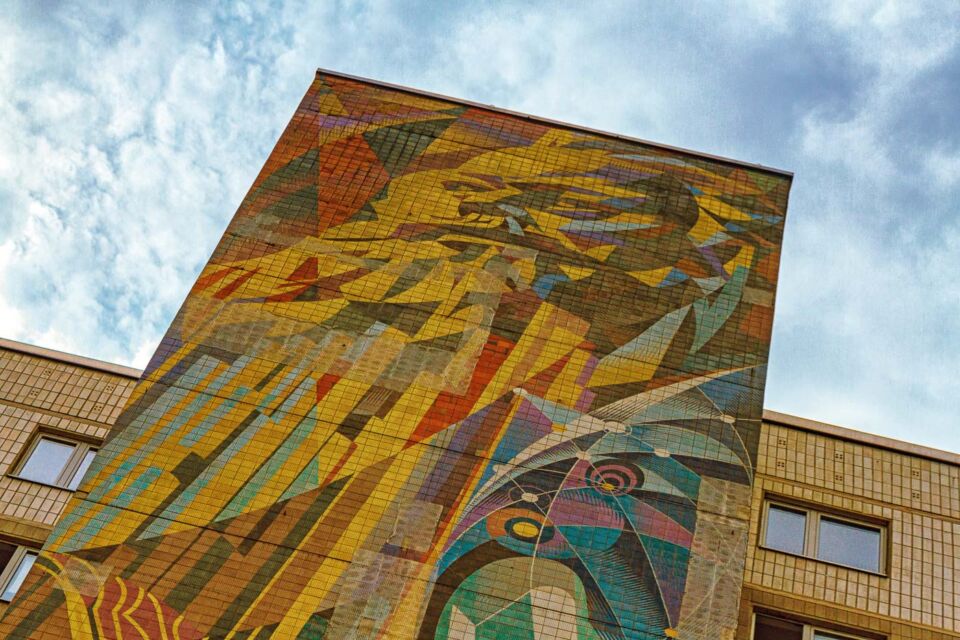
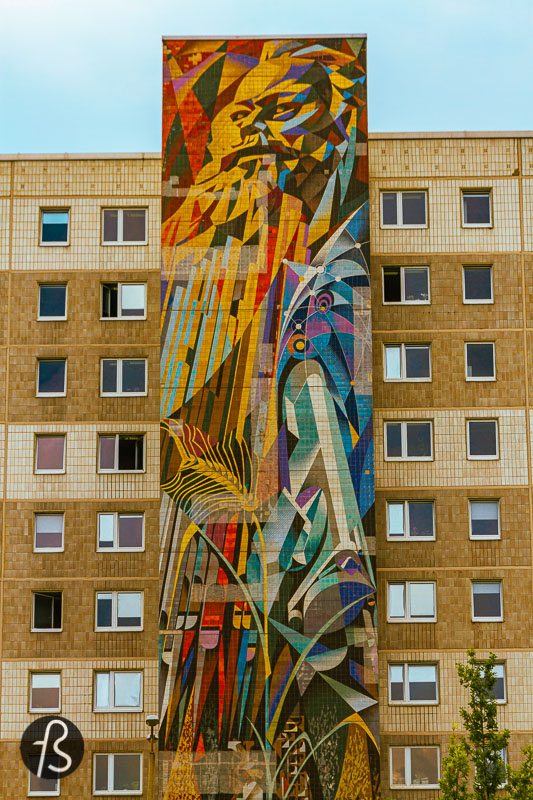
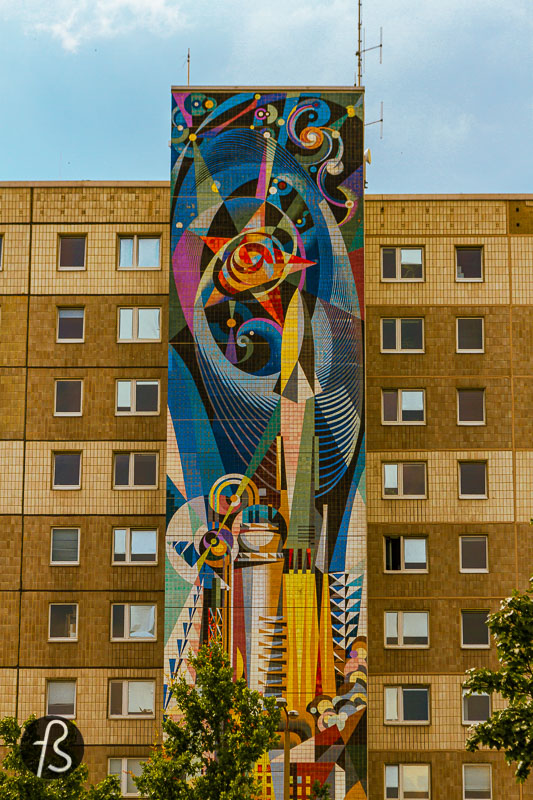
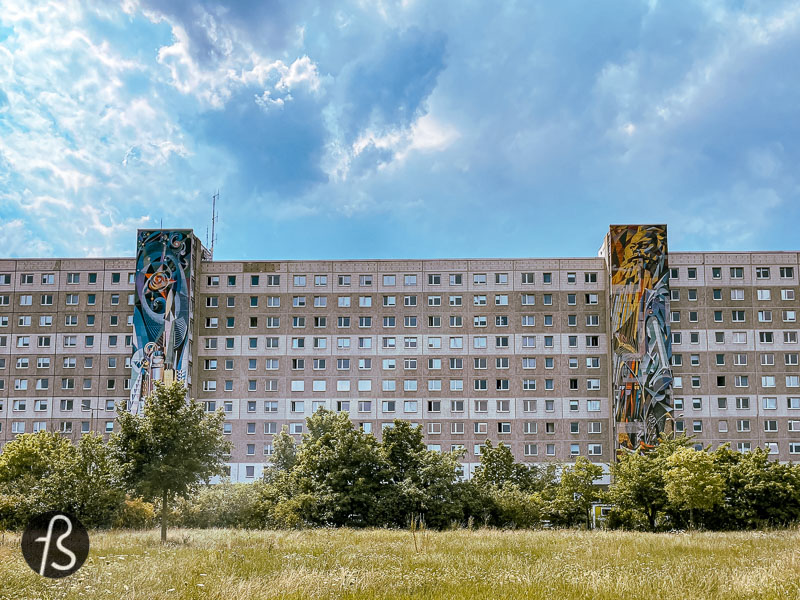
Karl Marx Mural by Josep Renau
Among all of them, our favorite is easily the one with Karl Marx, created in 1974 by Josep Renau, a Spanish artist from Valencia who moved to East Germany escaping persecution in Franco’s dictatorship. Called “Unity of the working class and the Founding of the GDR”, this colorful mural presents Karl Marx in a lionlike way in orange, red, and yellow shades.
Another mural by the same artist is called “The man-controlled forces of nature and technology” on its left side. At the bottom of this massive socialist mural, you can see workers and miners powering an explosion of industrial force that culminates with the development of technology and science, as can be seen in the colourful representation of the stars on the top of it. This is one of the most beautiful representations of the modern socialist society that we have seen.

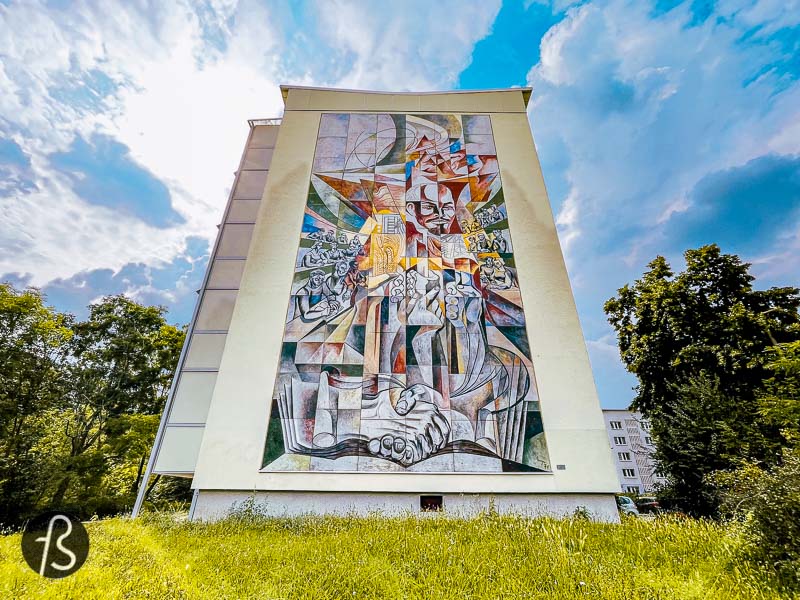
Lenin by Erich Enge in the Halle Neustadt
The other socialist mural that we were eager to see in Halle Neustadt pictures Lenin. If you have been following Fotostrasse for a while, you know that we have been hunting down his images and statues for some time now.
This Lenin mural in Halle Neustadt was unveiled in 1971 by Erich Enge, a bricklayer by training who found himself in large format paintings. His mural is named “He stirred the sleep of the world” and visually presents the three essential reforms that Lenin initiated in the Soviet Union. First, with the elimination of illiteracy, followed by a country comprehensive land reform and the country’s electrification in the 1920s. All these elements are presented around Lenin’s face in the mural, surrounded by young people reading and learning.
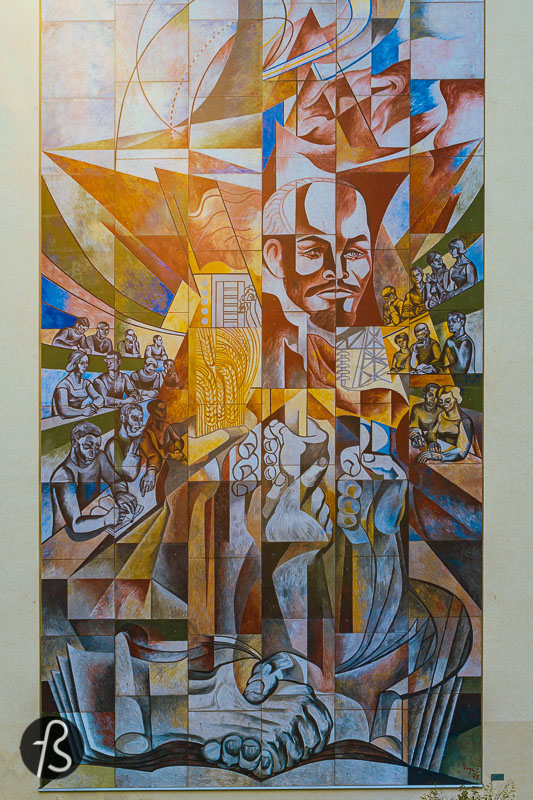
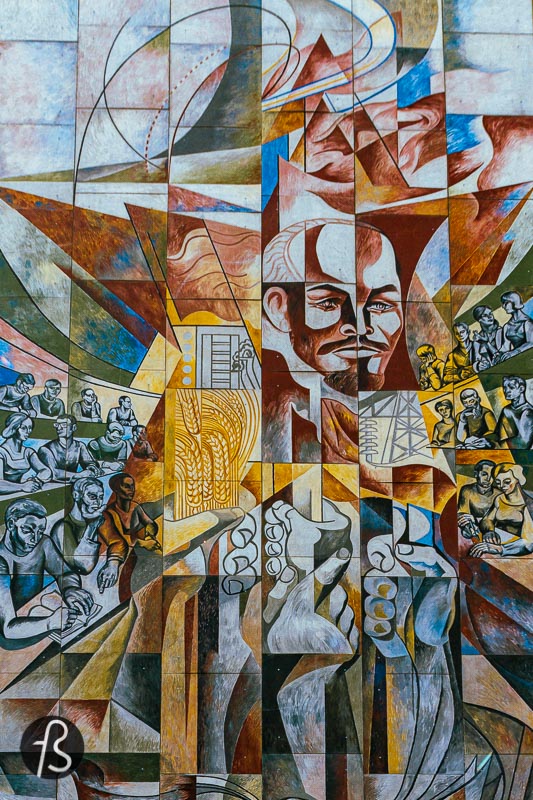

All around Halle Neustadt, there are open spaces with artworks. The pixelated-looking swimming people at the Halle Neustadt Schwimmhalle is quite attractive looking. Around the Park am Gastronom, you will find beautiful small murals showing people from other countries and cultures.
If you want to explore Halle Neustadt and see all these socialist murals, you must take a train to the S-Bahn station Halle Neustadt and follow the map below. It’s easier to get there by train, and we know it because we walked there and it was a mistake.
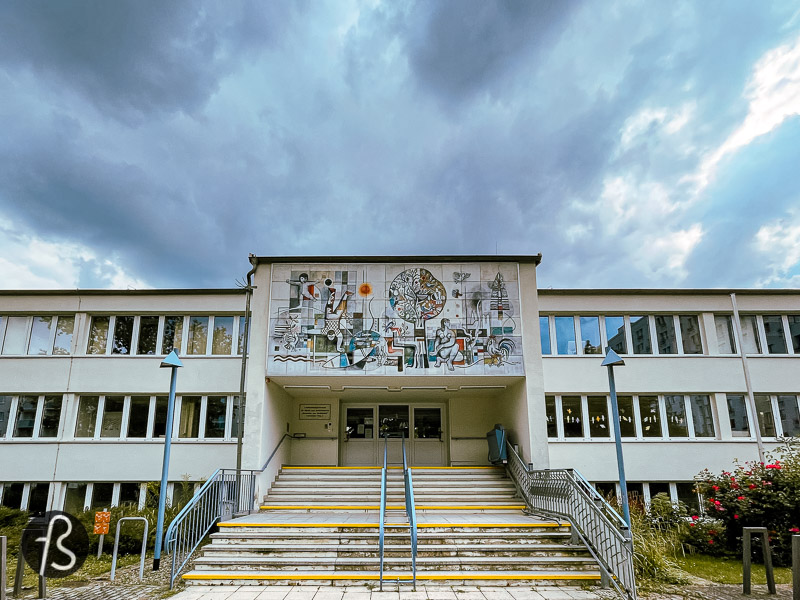

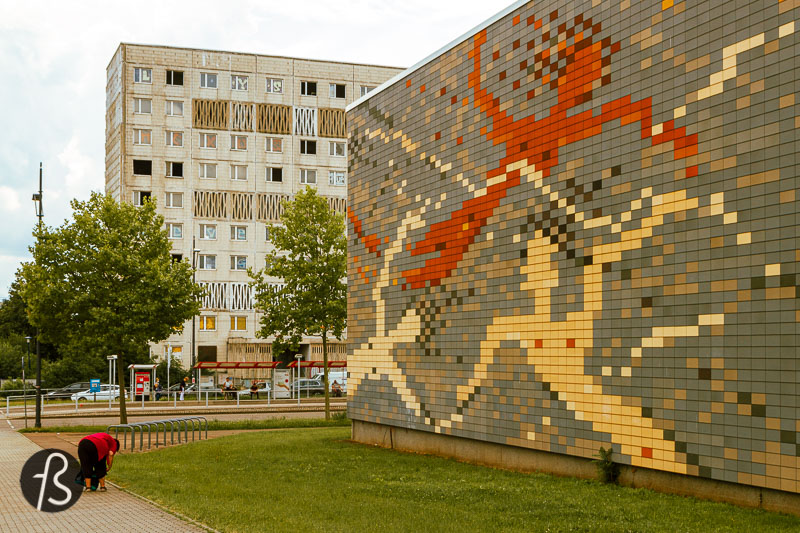
Lenin, Marx, and Beyond: Discovering the Hidden Gems of Halle Neustadt’s Murals
Halle-Neustadt
06124 Halle (Saale)